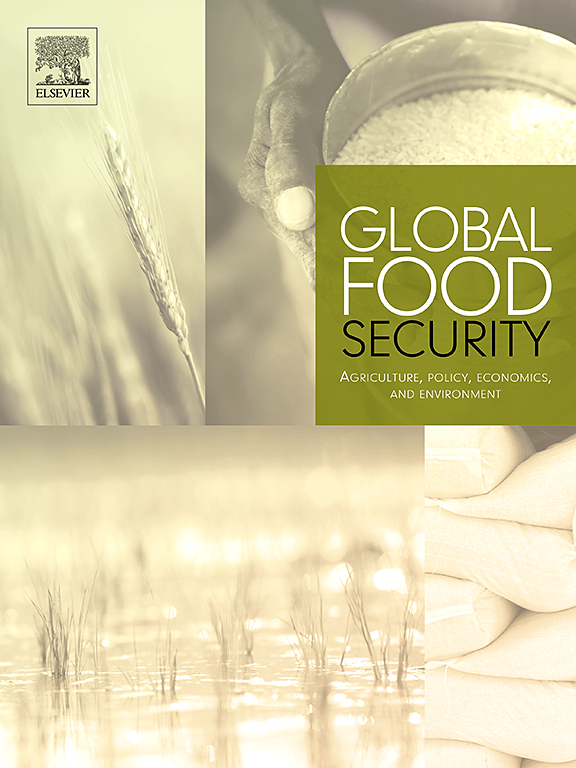Local food system resilience in China integrating supply and demand
IF 9.6
1区 经济学
Q1 FOOD SCIENCE & TECHNOLOGY
Global Food Security-Agriculture Policy Economics and Environment
Pub Date : 2025-02-04
DOI:10.1016/j.gfs.2025.100830
引用次数: 0
Abstract
The extent to which the food supply aligns with the food and nutrition demand is unclear, which is crucial during crises like the COVID pandemic. Here, we present a geospatial framework integrating 3.8 million road segments for evaluating the food system resilience in alignment with Chinese dietary requirements. Results reveal that China faces challenges in achieving complete local self-sufficiency in specific foods and heavily relies on large-scale transport in a north-south direction. When comparing actual consumption to the ideal dietary requirements, there is average increased pressure of 6.1% in food transport intensity (i.e., from 0.6% in staples to 11% in oilseeds). Nevertheless, China's diverse food supply chain is rich, and the food system in the southeastern coastal cities (46% of all) is highly resilient, but resilience decreases from east to west. In the future, policymakers should prioritize local food distribution by building a centrally coordinated-locally autonomous supply and marketing network.
中国地方粮食系统的弹性:供给与需求的整合
粮食供应与粮食和营养需求的一致程度尚不清楚,这在COVID大流行等危机期间至关重要。在这里,我们提出了一个地理空间框架,整合了380万个路段,用于评估符合中国饮食要求的粮食系统弹性。结果表明,中国在实现特定食品的完全自给自足方面面临挑战,并且严重依赖南北方向的大规模运输。当将实际消费量与理想膳食需求进行比较时,粮食运输强度的压力平均增加了6.1%(即,从主食的0.6%增加到油籽的11%)。尽管如此,中国多样化的食品供应链是丰富的,东南沿海城市(占全部城市的46%)的食品系统具有很强的弹性,但弹性从东向西递减。未来,政策制定者应该通过建立一个中央协调的地方自治供销网络,优先考虑地方粮食分配。
本文章由计算机程序翻译,如有差异,请以英文原文为准。
求助全文
约1分钟内获得全文
求助全文
来源期刊

Global Food Security-Agriculture Policy Economics and Environment
FOOD SCIENCE & TECHNOLOGY-
CiteScore
20.90
自引率
3.40%
发文量
69
期刊介绍:
Global Food Security plays a vital role in addressing food security challenges from local to global levels. To secure food systems, it emphasizes multifaceted actions considering technological, biophysical, institutional, economic, social, and political factors. The goal is to foster food systems that meet nutritional needs, preserve the environment, support livelihoods, tackle climate change, and diminish inequalities. This journal serves as a platform for researchers, policymakers, and practitioners to access and engage with recent, diverse research and perspectives on achieving sustainable food security globally. It aspires to be an internationally recognized resource presenting cutting-edge insights in an accessible manner to a broad audience.
 求助内容:
求助内容: 应助结果提醒方式:
应助结果提醒方式:


